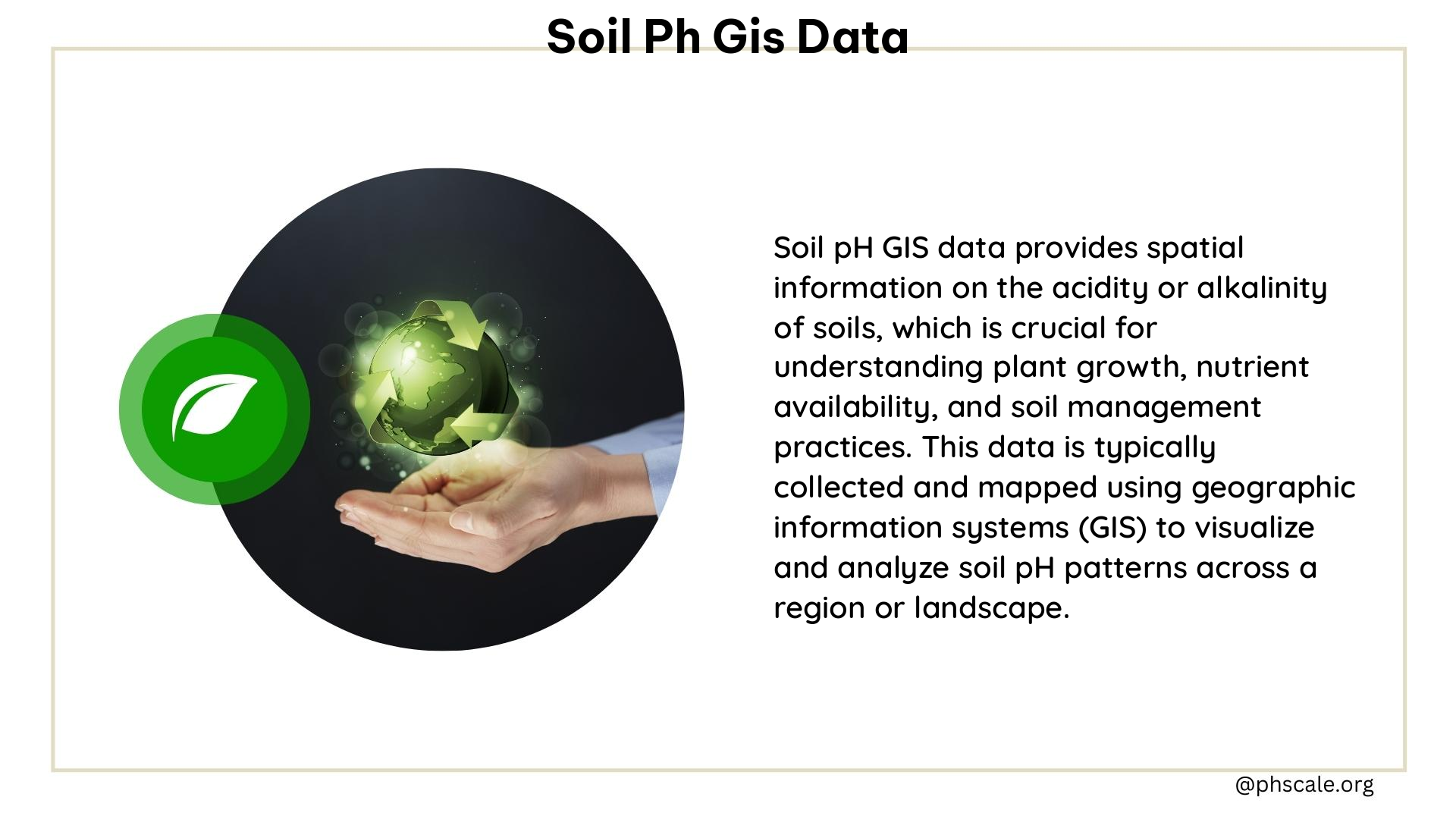Soil pH GIS data is a powerful tool for understanding the chemical composition and properties of soil in a specific region. By integrating this data with geographic information systems (GIS), researchers and land managers can gain valuable insights into the pH levels, nutrient availability, and potential contaminants present in the soil. This information is crucial for making informed decisions about land use, agricultural practices, and environmental conservation.
Accessing Soil pH Data from the Web Soil Survey
The Web Soil Survey (WSS), provided by the USDA Natural Resources Conservation Service, is a comprehensive source of soil data, including pH levels. To access this information, users can follow these steps:
- Visit the Web Soil Survey website and select the area of interest.
- Download the soil data in a format compatible with ArcGIS, such as shapefiles or CSV files.
- Import the data into ArcGIS and create a new layer for the soil pH data.
- Join the soil pH data with other relevant layers, such as soil type or land use, to perform spatial analysis.
- Utilize ArcGIS tools to analyze the soil pH data, including creating maps, performing spatial joins, and running spatial statistics.
Understanding Soil pH Levels and Descriptive Terms

Soil pH levels are categorized into the following ranges with associated descriptive terms:
| pH Range | Descriptive Term |
|---|---|
| 0-6.9 | Acidic (very acidic, strongly acidic, moderately acidic) |
| 7.0 | Neutral |
| 7.1-14.0 | Alkaline (slightly alkaline, moderately alkaline, strongly alkaline) |
Knowing the pH range and descriptive terms is crucial for interpreting the soil pH GIS data and understanding the implications for plant growth, nutrient availability, and potential contaminants.
Contaminants, Chemicals, and Substances in Soil pH GIS Data
Soil pH GIS data may also include information on various contaminants, chemicals, and substances present in the soil, such as:
- Heavy metals: Lead, mercury, arsenic, and cadmium
- Pesticides: Insecticides, herbicides, and fungicides
- Industrial pollutants: PCBs, dioxins, and furans
- Nutrients: Nitrogen, phosphorus, and potassium
Understanding the presence and levels of these substances is essential for assessing soil quality, identifying potential environmental risks, and implementing appropriate remediation strategies.
Dealing with Contaminants and Balancing Soil pH
To address contaminants and maintain a balanced soil pH, land managers and researchers can consider the following approaches:
- Soil Remediation: Implement methods to remove or neutralize contaminants, such as phytoremediation or chemical treatment.
- pH Adjustment: Apply lime or sulfur to adjust the soil pH to a more suitable range for plant growth.
- Organic Amendments: Add organic matter like compost or manure to improve soil structure and fertility.
By integrating these strategies with the insights gained from soil pH GIS data, land managers can make informed decisions to improve soil health and mitigate environmental risks.
Helpful pH Quantity for Consumption
For human consumption, a balanced diet with a variety of foods can help maintain a healthy pH balance. Focus on consuming:
- Alkaline Foods: Fruits, vegetables, nuts, and whole grains
- Acidic Foods: Meat, dairy, and processed foods in moderation
Maintaining a healthy pH balance through dietary choices can contribute to overall well-being and support the body’s natural processes.
History of Soil pH GIS Data
The collection and analysis of soil pH GIS data have a long history, dating back to the early 20th century. The National Cooperative Soil Survey, established in 1899, has been a key player in collecting and disseminating soil data, including pH levels. Over the years, advancements in technology and data collection methods have improved the accuracy and accessibility of soil pH GIS data, making it an invaluable resource for researchers, land managers, and policymakers.
Alternative Solutions
In addition to the traditional approaches to managing soil pH and contaminants, there are alternative solutions that focus on holistic and sustainable practices:
- Permaculture: A holistic approach to agriculture that emphasizes soil health and biodiversity.
- Regenerative Agriculture: Practices that focus on improving soil health, reducing tillage, and increasing organic matter.
These alternative solutions can complement the insights gained from soil pH GIS data to create a more comprehensive and environmentally-friendly approach to land management.
References
- USDA Natural Resources Conservation Service. (n.d.). Web Soil Survey – Home. Retrieved from https://websoilsurvey.nrcs.usda.gov/app/
- ISRIC. (2024). Soil Geographic Databases. Retrieved from https://www.isric.org/explore/soil-geographic-databases
- ArcGIS Online. (n.d.). World Soils 250m pH – Overview. Retrieved from https://www.arcgis.com/home/item.html?id=0961138215b8460e9f4e436d38c3b3b4
- NOAA. (n.d.). Soil Survey Geographic Database. Retrieved from https://coast.noaa.gov/digitalcoast/data/ssurgo.html
- USDA Natural Resources Conservation Service. (n.d.). Soil Survey Geographic Database (SSURGO). Retrieved from https://www.nrcs.usda.gov/resources/data-and-reports/soil-survey-geographic-database-ssurgo
